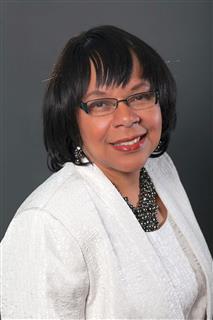
Circa 1965, having beautiful wood paneling was the envy of the neighborhood. It was like bringing the outdoors in. But 50-60 years later, it usually just makes a room seem dark and dated unless you live in a log cabin. In most cases, you can remove the paneling and paint the drywall underneath. Here's what you'll do.
What you'll need
- Primer
- Brushes
- Paint rollers
- Painter's tape
- Plastic floor protection
- Paint pan
- Putty knife
- Spackling paste for nail holes
- Safety goggles
- Screwdriver
- Flashlight
- Pry bar
- Hand sander
Step one: make sure there's drywall under there
Some home builders simply hung the panels directly onto the studs. Others hung drywall first. Then they nailed the paneling over it. Before you begin this project, you need to know what you have.
*Pro tip* Find out if you have drywall by removing the outlet and light switch covers. Then peer into the wall with your flashlight. You should be able to see the rough edges of drywall in there. If not, don't proceed unless you also want to hang the drywall. It's not that hard. But it's a two-person, multiple weekend job for the average DIYer. We want you to know what you're getting into. If this is more than you feel comfortable with, contact a professional.
Step two: remove the paneling
Put on your safety goggles. Insulation, nails or a piece of wood could go flying during this job.
Next, use a pry bar to remove any molding or trim, carefully if you plan to reuse it. Now, you'll see the edges of the panel. Pry it off panel by panel. It will be nailed into the studs, so you'll need to put some upper body strength into it. Break boards to get it off the wall. But try to keep the drywall underneath as undamaged as possible.
Step three: repair the drywall
You'll definitely have nail holes to fill after removing the paneling. You may also have small gouges. They are easy to fix. And you'll need to do that to have a smooth painting surface.
Apply spackle to the holes with your putty knife. Then allow them to dry before sanding the surface smooth. You may need a second coat. But know it doesn't have to be perfect. That's what primer is for.
Step four: prime the wall
Primer helps fill small imperfections and smooth the painting surface in preparation for painting the wall. Lay down your plastic and apply painter's tape where needed. Then roll your wall with primer. Use the paintbrush to get corners and crevices that a roller won't reach.
*Pro tip* If you take a break, put the end of your roller and paintbrush in a large freezer bag and seal it as well with tape or a rubber band. If the primer or paint dries on the brush, you may have to replace it. That's an extra expense you can avoid.
Let the primer dry on the wall. Then use your flashlight to see if there are any thin spots. Apply more, as needed.
And you're all ready to choose your paint color. Goodbye, paneling. Hello, 21st Century. For more home projects to update and improve your home, follow our blog.
About the Author
